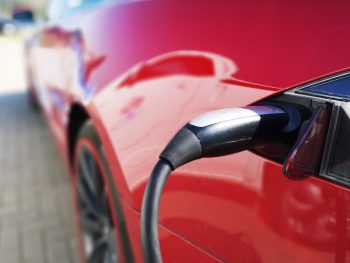Used EV values set to stabilise in H2, says Cap HPI
Used EV values will stabilise in the second half of 2023, according to the forecast experts at Cap HPI.

The drop in average EV prices is rapidly closing the upfront price gap between many electric models and their ICE counterparts
Its analysis indicates that large numbers of battery electric vehicle (BEV) models have now stabilised or appear close to a plateau following substantial decreases in used values in recent months.
But it warns that a small number remain weak and appear to still have some way to fall, with “no common denominator or central theme” affecting how individual models are performing.
Dylan Setterfield, head of forecast strategy at Cap HPI, said: “Many EV models are now looking good value, with trade values for the majority of models, where a comparison is possible, actually now below ICE equivalents. There is potential for some to increase from their current used value position. We assume further deflation in future and have factored this into our forecasts. There are small positive adjustments for the handful of models which have seen the heaviest falls.”
The comments are in line with latest analysis by Auto Trader, which also says there are strong signs of used EV values beginning to stabilise.
Its data reveals that EV retail prices continue to contract, on both a year-on-year (-19.1%) and month-on-month (-0.9%) basis, but with the huge levels of supply starting to soften slightly, there are signs of them beginning to stabilise. And with a growing number of models reaching price parity with their ICE counterparts, the online marketplace says it’s seeing very solid demand for second-hand electric.
Auto Trader echoes Cap HPI’s comments that the drop in average EV prices is rapidly closing the upfront price gap between many electric models and their ICE counterparts, and in some cases, has already made them cheaper.

Auto Trader’s director of data and insight Richard Walker
It cites the example of a three-year-old electric Jaguar I-Pace, which was £600 cheaper than a traditionally fuelled F-Pace in April, but the gap grew to nearly £2,000 in June. Following the price realignments made by Tesla, the average price of a used three-year-old Model 3 (£30,700) is now only £3,200 more expensive than a BMW 3 Series of the same age – down from £3,600 in April, and a whopping £22,000 in August. The result has been a positive one, with used Tesla cars selling faster than any other in the market, taking an average of just 19 days.
More broadly, EVs are taking longer to sell than any other fuel type, according to Auto Trader. However, the average number of days it takes for them to leave forecourts is falling steadily as they become increasingly affordable, dropping from 42 days in May, to 38 days in June. Both petrol and diesel cars remained flat over the same period at 27 days.
Auto Trader’s director of data and insight Richard Walker said: “Although EV values are still contracting, it’s important to put it into the right context. The electric market is still an immature one, and what we’re seeing is a natural and expected correction in the wake of a massive influx of stock over recent months. It may be some time before the market reaches a complete equilibrium, but we are seeing clear signs of prices stabilising and some very attractive savings for car buyers.”
New research from Startline Motor Finance also reinforces Cap HPI’s and Auto Trader’s comments. Its July Used Car Tracker finds a third (36%) of dealers say the market for used EVs has stabilised. But 20% expect a further drop in EV values of up to 10%, while a further 30% believe that coming reductions will range between 10-20%.
Also, while 28% agree with the statement that the market is finding its level, 24% say that consumer demand for EVs remains limited. Some 8% are concerned about the rapidly rising number of electric cars and vans that are soon expected to reach the used sector.
Paul Burgess, CEO at Startline Motor Finance, said: “The last year has been a turbulent one for the used EV market and many dealers have been left bruised by the reductions in values of stock that they have been holding.
“The picture now is pretty mixed, our research indicates. While more than a third think that the situation has stabilised, quite significant numbers believe that further falls are likely and some that those reductions will be pretty serious.
“An interesting point is that very few seem to be concerned about the huge numbers of ex-company car EVs that will quite soon start to hit the used market in comparatively large quantities. These will represent a significant step up in volumes and there will need to be a corresponding increase in demand if values aren’t to further suffer.”
The research also reveals some interesting findings about dealer attitudes to EVs. This month, just 12% said that they didn’t stock EVs at all compared to 30% in May, while 22% say customer demand for EVs is now steady, against 2% three months ago.
Paul Burgess said: “These numbers show quite a rapid change in dealer attitudes towards EVs. More retailers are stocking these vehicles while there is increased confidence around consumer demand. There is a chance that we are beginning to see, in these figures, a normalisation in the EV market following the last year.”
Optimistic outlook for H2 across used car sector
Cap HPI and Auto Trader have both said the outlook across the used car market for the rest of 2023 is optimistic.
According to the latest data from the Auto Trader Retail Price Index, second-hand car prices are accelerating at their fastest rate in eight months. It says the strength and stability in second-hand retail values continues to be driven by the imbalance in market dynamics. Used car supply, which has been hit since the start of the pandemic and the subsequent new car production chip shortages, was down 4.1% YoY in June, whilst consumer demand was up 2.3%, fuelling price growth.

Dylan Setterfield, head of forecast strategy at Cap HPI
Cap HPI meanwhile says used car volumes are expected to slowly increase in the coming months, as fleets receive replacements for some long overdue vehicles. But it added that new car supply issues will remain and be subject to frequent change for many OEMs, while the used market in H2 will see the positive impact of reduced used car supply as a result of more than 2.36 million fewer cars registered through the course of the pandemic, particularly from fleets.
The valuation specialist is forecasting “a gradual market adjustment over the next several months or so and certainly not a ‘mirrored’ fall from the earlier high point”.
Dylan Setterfield continued: “The used value increases on some models have effectively set a new market and may not return to previous levels.”

